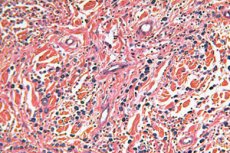
24 May 2024, 17:35
一项新研究发现,人工智能 (AI) 可以帮助识别已扩散到身体其他部位的乳腺癌,而无需进行活检。
研究人员表示,人工智能可以分析核磁共振扫描结果,以检测腋下淋巴结中是否存在癌细胞。
研究发现,在临床实践中,人工智能可以帮助避免 51% 不必要的手术淋巴结活检来检查癌症,同时正确识别 95% 的乳腺癌扩散患者。
德克萨斯大学西南医学中心乳腺成像研究主任、首席研究员巴萨克·多根博士解释说,大多数乳腺癌死亡是由于癌细胞扩散到身体其他部位,而癌症通常首先扩散到腋窝淋巴结。
多根在医疗中心的新闻发布会上表示,检测扩散到淋巴结的癌症“对于制定治疗决策至关重要,但传统的成像技术不够灵敏,无法有效检测出来”。
Dogan 补充道,MRI 或针刺活检结果为良性的患者通常被迫接受手术淋巴结活检,因为这些测试可能会漏掉大量扩散到乳房以外的癌细胞。
研究人员使用 350 名新诊断的乳腺癌患者的 MRI 扫描结果对人工智能进行了训练,这些患者的淋巴结中均发现了癌症。
研究人员在《放射学:癌症成像》杂志上报告称,测试表明,新的人工智能在识别此类患者方面比使用 MRI 或超声波的医生表现得更好。
Dogan 解释说:“这是一个重要的突破,因为尽管手术活检获得阳性结果确认癌细胞存在的概率很低,但仍存在副作用和风险。利用这种模型,提高我们在常规 MRI 检查中排除淋巴结癌细胞的能力,或许可以降低这种风险,改善临床疗效。”

